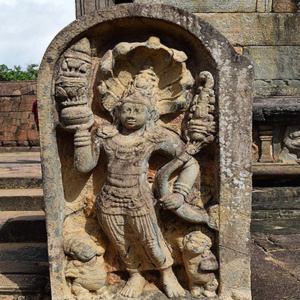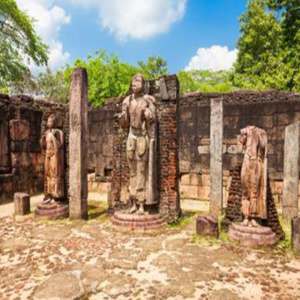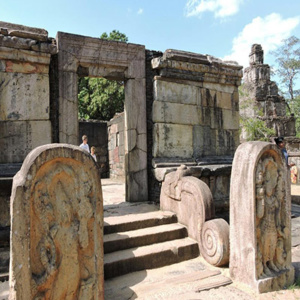

hetadageya-polonnaruwa
hetadageya-polonnaruwa-srilanka
Hatadage is an ancient shrine that housed the relic of the tooth during the Kingdom of Polonnaruwa. This building was constructed by King Nissanka Malla (1187-1196) to house the Buddha’s tooth relic, according to the inscriptions on a stone slab next to this building. But whether it was built by King Parakramabahu (1153-1186) and refurbished by Nissanka Malla (1187-1196) is uncertain.
Much bigger than the Atadage, this building is encircled by strong stone walls. With two floors, it is comparable in layout to Atadage. There are still stone steps to the upper floor. The upper floor was likely made of wood, and it would have housed the tooth relic here. There are remains of three standing Buddha statues on the ground floor. The mansion was subsequently renovated with two apartments. The Hatadage shows a sixty relic shrine in Sinhalese. This feat was constructed in memory of the whole structure. Another version is that it was called due to six relics that were once preserved and secured.
The relics were constantly held in a unique room in the Hatadage’s upper story. The shrine is guarded by a 120-foot elevated stone wall. You can also discover that the shrine has a wooden structure at the same time. The shrine entrance is adorned with sculptures of stone.
“Heta” implies sixty and as a result, this building is assumed to have been named after this name because it was finished in sixty days or housed sixty relics with a Buddha tooth relic. The Sandakada Pahana (the moonstone) at the entrance is another significant component of this construction. This is a rare example of a lion appearing on the rock of the moon. The lion and the bull are usually not seen in the moonstones in the Polonnaruwa Era.


